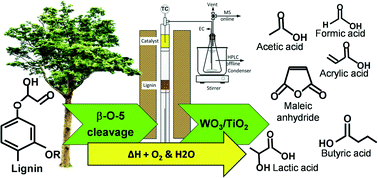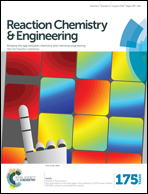Gas–solid conversion of lignin to carboxylic acids
Abstract
Lignin represents 15% to 40% of the dry weight of lignocellulosic biomass but remains under exploited as a sustainable feedstock for chemical and fuels even though it is the only bio-polymer with aromatic units. Technology that selectively converts lignin to value added specialities would improve the economics of the burgeoning bio-refinery industry. Here, we introduce a two stage gas-phase catalytic process that produces carboxylic acids and aromatics from lignin while minimizing coke and char and maintaining catalyst activity. In the first step, a mixture of 50% water vapour in air crack and partially oxidize this complex macromolecule (<550 °C). The effluent gas contacts heterogeneous mixed-metal oxides or metal catalysts in the second step. The product profile from the second step includes aromatic compounds but mostly C4 carboxylic acids such as maleic acid and butyric acid. Vanadium catalysts cleave lignin bonds, open aromatic rings and oxidize lignin to carboxylic acids, especially maleic acid. WO3/TiO2 mostly gave butyric acid. Basic catalysts produced more aromatic compounds. The maximum amount of coke was 5% of the total carbon in lignin.



 Please wait while we load your content...
Please wait while we load your content...